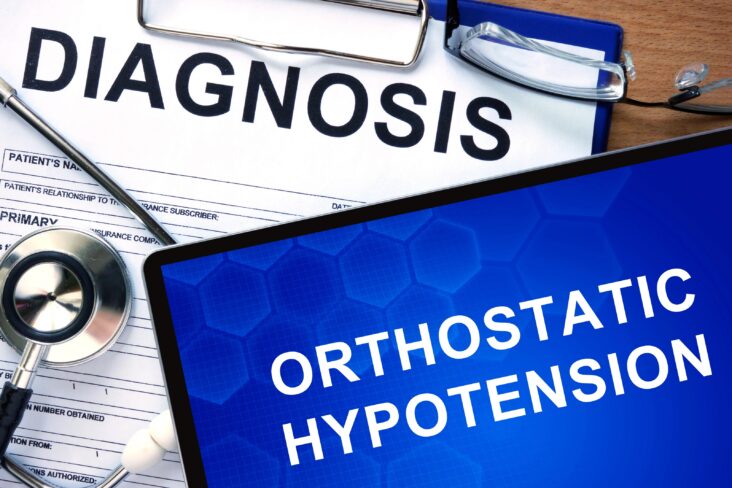Click Here to Download this Blog Post – Orthostatic Hypotension: Part 6 Of 6
By Dr. Nicholas L. DePace, M..D., F.A.C.C – Cardiologist specializing in autonomic dysfunction, Ehlers-Danlos syndrome and POTS.
This is Part 6 of a 6 Part Series about Orthostatic-Hypotension
Neurogenic orthostatic hypotension is usually assumed to be due to a problem with subnormal norepinephrine being released from peripheral sympathetic nerves (the post-ganglionic sympathetic neurons).
In many disorders, norepinephrine levels will be low.
When there is subnormal norepinephrine released, there is impaired vasoconstriction reduced intrathoracic volume.
The absence of an appropriate baroreflex increase in heart rate as blood pressure falls is the presence of neurogenic orthostatic hypotension.
If the heart rate increases excessively, this is usually a sign of dehydration. However, the presence of an increase in heart rate does not exclude neurogenic orthostatic hypotension.
In vasovagal syncope, or reflex syncope, the opposite occurs, namely the heart rate falls during the so-called reflex syncope, and this can oftentimes be reduplicated with a person on a tilt test.
The neurodegenerative diseases that most often produce significant baroreflex dysfunction are the synucleinopathies. These will be described in part 2.
One note about orthostatic neuropathy changes.
We already mentioned post-ganglionic autoimmune autonomic ganglionopathy (AAG).
We described metabolic disorders such as diabetes but did mention a vitamin deficiency, such as B12, can cause this also.
Uremia rarely can cause it, that is, renal disease that is advanced. However, other autoimmune disorders, such as Sjögren’s syndrome and systemic lupus erythematous, can also cause orthostatic hypotension.
Other rare genetic disorders, such as Fabry disease and sodium channelopathies, can also cause orthostatic hypotension.
When we described toxic effects, we often see alcohol and chemotherapeutic agents as causing autonomic neuropathy damage and orthostatic hypotension.
Oftentimes, a muscle weakness is associated with these types of autonomic failure as it is with the infectious types, which can be seen with HIV, Chagas disease, leprosy, and other rare disorders.
A very rare form of autonomic failure associated with muscle weakness is Eaton-Lambert syndrome, myasthenia gravis, and botulism.
About the Author
Nicholas L. DePace, MD, FACC is a board-certified cardiologist and Medical Director of Franklin Cardiovascular Associates. A graduate of the Mount Sinai School of Medicine, Dr. DePace has decades of clinical, academic, and research experience and has held faculty appointments as a Clinical Professor of Medicine, becoming one of the youngest full professors in Philadelphia at the time of his appointment.
Dr. DePace specializes in the diagnosis and treatment of autonomic nervous system dysfunction (dysautonomia), including POTS, autonomic dysfunction associated with Ehlers-Danlos syndrome (EDS), chronic fatigue, and anxiety-like conditions that are frequently misdiagnosed. He is nationally recognized for his work on parasympathetic and sympathetic (P&S) nervous system imbalance, a core mechanism underlying many complex chronic disorders.
In addition to treating patients from across the United States, Dr. DePace is a prolific clinical researcher and author of multiple nationally distributed medical textbooks published by Springer and W.W. Norton, focusing on autonomic dysfunction, mitochondrial disorders, cardiovascular disease, and mind–body medicine.
👉 View Dr. DePace’s professional profile
👉 View medical books by Dr. DePace







